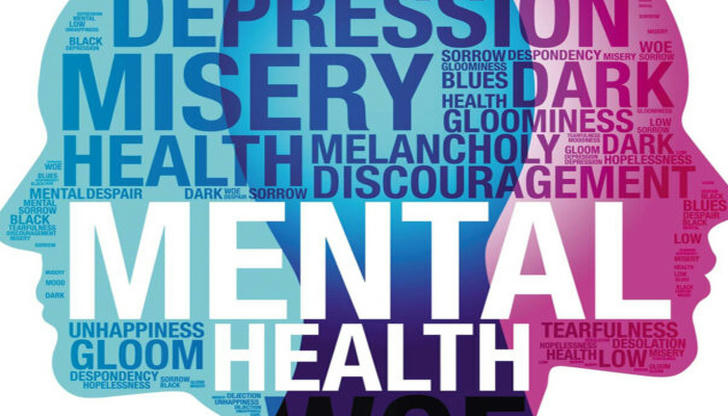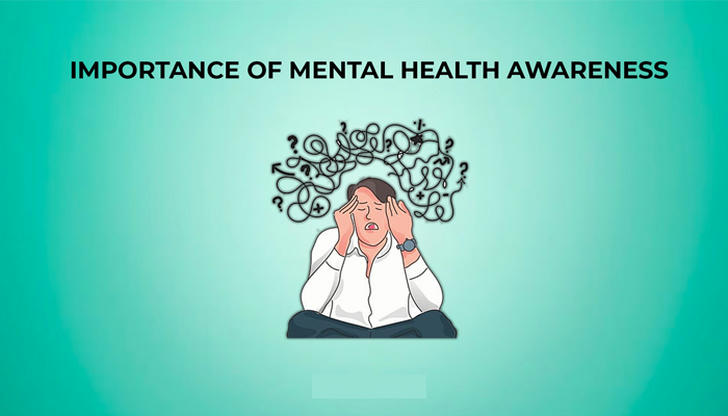Mental Health Awareness: Recognizing Signs and Seeking Help
Introduction
Mental health is an essential aspect of overall well-being. It influences how we think, feel, behave, relate to others, and handle stress. Yet, despite its importance, mental health often receives less attention than physical health. According to the World Health Organization, nearly one in eight people worldwide lives with a mental health condition. Raising awareness, recognizing signs early, and seeking timely support can make a profound difference in the lives of individuals and communities.

1. Understanding Mental Health
What Is Good Mental Health?
Good mental health is more than just the absence of mental illness. It means being able to cope with life’s challenges, build positive relationships, and contribute productively to society. People with sound mental health are able to manage their emotions, recover from adversity, and maintain a sense of purpose.
Common Mental Health Conditions
Mental health disorders vary in type and severity, but some of the most common include:
- Depression: Characterized by persistent sadness, lack of interest, and feelings of worthlessness.
- Anxiety Disorders: Involving excessive worry, panic attacks, and social withdrawal.
- Bipolar Disorder: Marked by alternating periods of depression and elevated mood (mania).
- Post-Traumatic Stress Disorder (PTSD): Triggered by experiencing or witnessing traumatic events.
Mental Health Across the Lifespan
Mental health can be affected at any stage of life—from childhood to old age. Children may struggle with developmental or behavioral issues, while adolescents are vulnerable to anxiety and mood disorders. In adults, workplace stress or caregiving roles can impact emotional health, and older adults may face isolation or cognitive decline.
2. Recognizing Early Warning Signs
Identifying signs of mental distress early is critical for effective intervention. These signs may appear gradually and vary between individuals.
Emotional Symptoms
- Persistent sadness or hopelessness
- Mood swings or emotional numbness
- Irritability or unexplained anger
- Feelings of guilt, shame, or worthlessness
Cognitive Symptoms
- Difficulty concentrating or making decisions
- Racing thoughts or intrusive worries
- Memory problems
- Distorted thinking patterns
Behavioral Changes
- Withdrawal from social activities or relationships
- Decline in work or academic performance
- Risk-taking or reckless behavior
- Increased use of alcohol, drugs, or other coping mechanisms
Physical Symptoms
- Fatigue and low energy
- Insomnia or oversleeping
- Changes in appetite or weight
- Frequent headaches or unexplained aches

3. Causes and Risk Factors
Mental health conditions arise from a complex interaction of biological, psychological, and environmental influences.
Biological Factors
- Genetics: Family history may increase susceptibility.
- Neurochemistry: Imbalances in neurotransmitters such as serotonin or dopamine can impact mood and behavior.
- Medical Conditions: Chronic illnesses like diabetes or thyroid disorders may co-occur with mental health issues.
Psychological Influences
- Childhood trauma: Abuse, neglect, or early loss can have lasting effects.
- Chronic stress: Unresolved stress from work, relationships, or financial instability can strain mental well-being.
Environmental and Social Factors
- Poverty or unemployment
- Discrimination or marginalization
- Lack of social support
- Unstable living conditions
4. Why People Avoid Seeking Help
Despite increasing awareness, many people hesitate to seek help. Understanding the barriers is essential for improving access.
Stigma and Misconceptions
Fear of being judged or misunderstood remains a major deterrent. Myths such as “mental illness is a sign of weakness” persist, despite scientific evidence to the contrary.
Lack of Awareness
Some individuals may not recognize that their symptoms indicate a mental health condition. Others may downplay the severity or believe they should “tough it out.”
Accessibility and Cost
Limited availability of mental health services—especially in rural or low-income areas—can prevent individuals from getting care. High costs or lack of insurance coverage can also be obstacles.
Cultural and Gender Barriers
Cultural beliefs or gender norms may discourage people, particularly men or minority groups, from discussing emotional issues or seeking therapy.

5. When and How to Seek Help
Knowing when and how to seek help is vital for recovery and management.
When to Seek Support
Consider reaching out to a mental health professional if:
- Symptoms persist for more than two weeks
- Daily functioning is impaired
- There are thoughts of self-harm or suicide
- Emotional distress is overwhelming or unmanageable
Types of Mental Health Professionals
- Psychologists: Specialize in assessment and therapy.
- Psychiatrists: Medical doctors who can prescribe medication.
- Licensed Counselors or Therapists: Provide talk therapy and support.
- Social Workers: Assist with crisis management and community resources.
Treatment Options
- Psychotherapy: Cognitive Behavioral Therapy (CBT), Dialectical Behavior Therapy (DBT), and others are evidence-based approaches.
- Medications: Antidepressants, anti-anxiety drugs, and mood stabilizers may be used as part of treatment.
- Lifestyle Interventions: Regular exercise, sleep hygiene, and healthy eating can support recovery.
Crisis Help
In emergencies:
- Contact a local crisis line or emergency services.
- Use national hotlines such as:
- National Suicide Prevention Lifeline (U.S.): 988
- Samaritans (UK): 116 123
6. Promoting Mental Wellness
Prevention and proactive care play a key role in maintaining mental health.
Daily Habits
- Get adequate sleep and exercise
- Practice mindfulness or relaxation techniques
- Maintain a balanced diet
- Limit screen time and news consumption
Building Resilience
Resilience helps individuals recover from stress and adapt to adversity. Skills such as problem-solving, emotional regulation, and optimism can be developed over time.
Social Support
Strong connections with friends, family, and community can buffer against stress. Engage in meaningful activities, volunteer, or join support groups.
Workplace and School Initiatives
Employers and educators can promote mental health by offering:
- Employee Assistance Programs (EAPs)
- Mental health days and flexible work policies
- School counseling services and peer education
7. Supporting Others
Being there for someone who may be struggling can make a meaningful difference.
How to Help
- Approach with empathy and concern
- Ask open-ended questions like, “How have you been feeling lately?”
- Avoid minimizing their experience (e.g., “Just cheer up”)
- Offer to help find resources or accompany them to appointments
What Not to Do
- Don’t judge or criticize
- Avoid offering unsolicited advice or comparisons
- Don’t pressure them to “snap out of it”
Conclusion
Mental health affects every aspect of our lives—from our relationships and productivity to our physical health. Recognizing the signs of mental distress, understanding the underlying causes, and seeking or offering help without judgment are all critical steps in building a mentally healthy society.
We all have a role to play in reducing stigma and promoting awareness. By normalizing conversations about mental well-being, encouraging professional support, and practicing compassion, we can create a world where mental health is treated with the same urgency and care as physical health.
You are not alone. Help is available, and recovery is possible.
